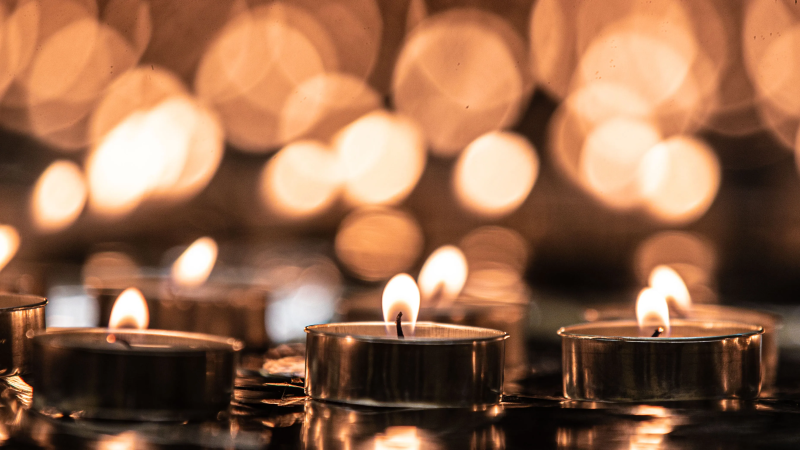The videos out of Israel, Gaza are graphic, but some can't look away: How to cope
The videos are graphic.
Cable news airs them, but often with a warning. “There are images that I want you to see now, and I have to warn you that what you are about to see is disturbing,” CNN anchor Becky Anderson says before sharing a clip.
Female Israeli hostages being paraded through the streets, one being taken away on a motorbike by terrorists, begging for her life. An Israeli mother and her two children being held by terrorists in an unknown location. In Gaza, buildings are reduced to rubble and images of sobbing Palestinian children are going viral.
Much of the crisis is unfolding on social media, with TikToks from around the country showing the horrors − the wounded, the bloody, the destruction on both sides of the conflict.
‘It’s jarring to see’
For American Jews, it feels deeply personal, says Rabbi Motti Seligson, Director of Public Relations for Chabad.org.
“The proximity is real – it’s families, it’s friends,” he explains. “It’s like ISIS overrunning Cleveland. You know someone in Cleveland.”
Like many orthodox Jews, Seligson was not on his phone or turning on the TV as he observed the Jewish holiday of Simchat Torah, which concluded Sunday after dark. The holiday marks the end of the reading of the Torah and a return to the beginning.
“The entire community was observing the holiday and that meant that we weren’t on the internet, but word spread very quickly about what was transpiring. It was shocking.”
Still, it wasn’t until he got on his phone he was able to “appreciate the scope and level of brutality” of a story that is largely unfolding in videos.
“You’re talking about teams of terrorists that were going home to home to torture, murder complete families – children, elderly people – kidnapping them and taking them hostage,” he says.
Ryan Brown, on the other hand, has had all weekend to digest what's happening. He woke up on Saturday morning to a phone filled with notifications from his family and friends, alerting him to the situation in Israel. Brown has many friends in Israel and lived in the country for several months on two separate occasions. He has visited more than a dozen times.
The 30-year-old gets a lot of his news from his social media feed, but it's hard-to-watch. “It’s jarring to see the videos and the abuse of human rights of women and grandparents and children and the mass killings.”
But it’s important we see what’s going on, Brown says.
“This is a wakeup call to American Jews that you don’t have the luxury of looking the other way, of not getting involved.”
Aziz Abu Sarah, author of "Crossing Boundaries: A Traveler’s Guide to World Peace," understands the complications around viewing disturbing images and videos.
"On one hand, I want people to understand and to be shocked, but unfortunately, the way those images are now used isn't to get to us to understand the horrors of war, and the need to come to our sanity and figure out how to stop the killing, and instead is to mobilize more people and mobilize more anger," says Abu Sarah, who is Palestinian.
Yet it is important for people to see what is happening "particularly when it comes to the harms civilians suffer and the effects of collective punishment," says Sarah Parkinson, assistant professor of political science and international studies at Johns Hopkins University.

'A sense of fear':Sen. Cory Booker says he is shaken, angered, heartbroken after taking cover in bomb shelter in Israel
How to cope with Israel-Hamas graphic images, videos
So how should people balance their desire to get the news, the whole story, with their mental health as videos display things they can't unsee?
Experts say it’s important to be mindful of your mental health when your feed shows graphic content.
"It's a really fine line, between, taking care of yourself and protecting yourself from witnessing just this depraved violence and this evil," says Rabbi Elaine Glickman, assistant executive director of Women’s Rabbinic Network. "And yet, the importance of not looking away and the importance of bearing witness."
If you're firmly stuck in your belief one one side, consider putting yourself in someone else's shoes. "If it was a group of Israeli soldiers, if you're pro-Palestinian, and they went inside a Palestinian village and did what Hamas did, how would you feel?" Abu Sarah adds. "Would you be also saying 'oh, this is totally fine.' And then vice versa. How would you feel if you're pro-Israel, and the bombardment in Gaza is happening and you see families being killed and with the bombings, how would that make you feel?"
And take care to be sure you do not grow numb to what you see.
"The repeated posting of graphic images can lead to desensitization and dehumanization, where people become numb to what they are watching, stop seeing victims as individuals who have lives and families and stop caring," Parkinson explains.
It's OK to take a break from social media, too − even if you're a news junkie. "Many people who live this violence every day, or who have lived it in the past, stay offline during times like these given how traumatizing viewing these images can be," Parkinson says.
Disclaimer: The copyright of this article belongs to the original author. Reposting this article is solely for the purpose of information dissemination and does not constitute any investment advice. If there is any infringement, please contact us immediately. We will make corrections or deletions as necessary. Thank you.







